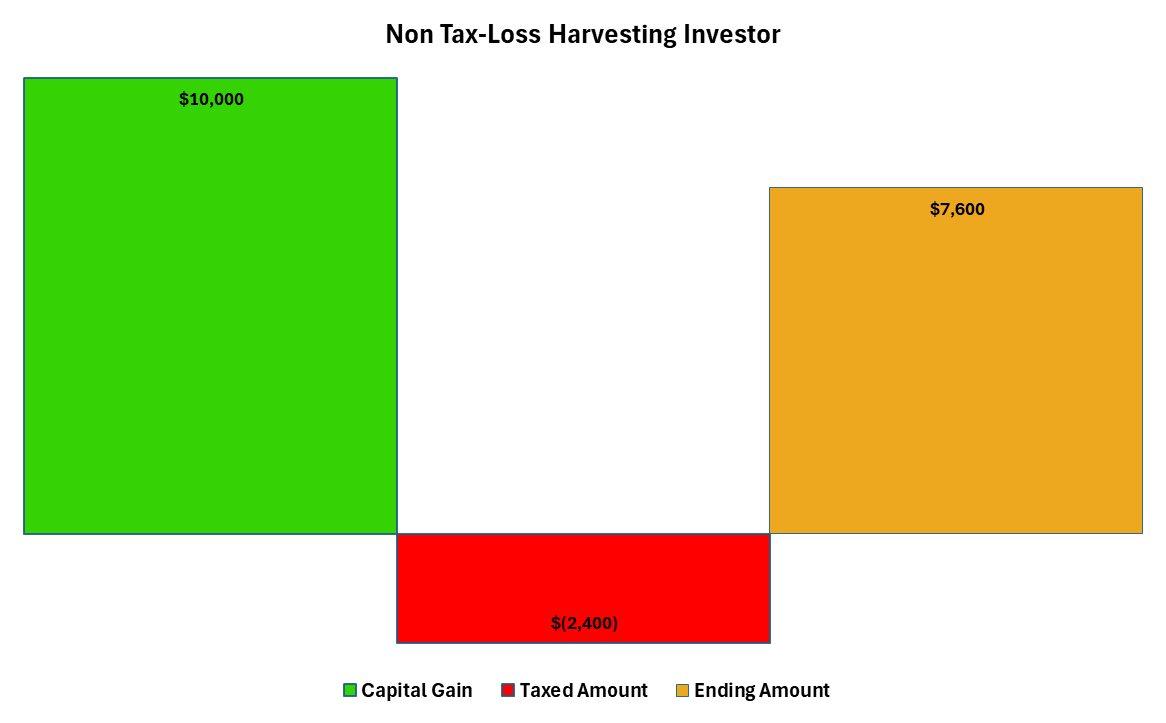
BitGo Intro: As part of our commitment to providing investors and RIAs with valuable insights to navigate the dynamic world of digital assets, we're pleased to partner with 21Shares to bring critical insights around tax-loss harvesting to investors and RIAs. Missed our first collaboration? Watch the replay of our webinar, Diversifying Institutional Partnerships in Digital Assets, here.
21Shares Intro: As part of our commitment to providing investors and RIAs with valuable insights to navigate the dynamic world of digital assets, we're pleased to partner with BitGo to bring critical insights around tax-loss harvesting to investors and RIAs. Missed our first collaboration? Watch the replay of our webinar, Diversifying Institutional Partnerships in Digital Assets, here.
One of the best-kept tax secrets in crypto is tax-loss harvesting of digital assets, such as Bitcoin and Ethereum, being exempt from the wash-sale rule. But what exactly are tax-loss harvesting and the wash-sale rule? In this article, we’ll dive into these concepts and explain why tax-loss harvesting is such a powerful strategy for RIAs to consider for their crypto-invested clients to offset taxable gains or even regular income.
What is tax-loss harvesting?
With the growing interest in cryptocurrencies as a component of diversified portfolios, more investors are recognizing the potential benefits of including them alongside traditional investments. Due to their unique nature, digital assets are exempt from traditional wash sales rules, making understanding the tax implications of transactions, like tax-loss harvesting essential to overall portfolio management,
Tax-loss harvesting is a strategy that involves realizing investment losses to offset capital gains or even ordinary income. The U.S. federal government allows investors to apply capital losses to reduce capital gains in the current tax year or carry those losses forward indefinitely. A maximum of $3,000 of capital losses each year can be used to offset ordinary income—the income earned from a job—and there’s no limit to how much capital loss can be used to offset capital gains! This can be a powerful tool to enhance a portfolio’s yearly returns.
What is the wash sale rule?
When investors realize a loss on an asset, they may want to maintain exposure by repurchasing the same or a similar asset. However, the government has measures to prevent investors from claiming a tax deduction while immediately reinvesting in the same security. This is known as the "wash sale" rule. Under this rule, investors cannot claim a loss for tax purposes if they buy a “substantially identical” security within 30 days before or after selling the original asset.
Here’s where it gets interesting: the wash-sale rule doesn’t apply to digital assets. For example, an investor could buy Bitcoin for $63,000, sell it the next day for $62,000, realizing a $1,000 capital loss, and then repurchase it just an hour later for $62,500. That investor could still apply that $1,000 loss to offset capital gains. This strategy is a powerful way to reduce your tax burden. Let’s take a look at two portfolios: one that utilizes tax-loss harvesting and one that does not.
Investor who does not tax-loss harvest:
If an investor purchased $10,000 worth of Bitcoin on March 1, 2021, at a price of $45,159 and sold it on November 1, 2021, for $61,004, they would have made a 35.08% profit, equating to $3,508. Assuming the investor falls into the 24% marginal tax bracket, $842 of that profit would go toward taxes, leaving them with an after-tax return of 26.67%, or $2,667.
Investors who tax-loss harvest:
Another investor purchased $10,000 worth of Bitcoin on March 1, 2021, at $45,159.50. Instead of selling on November 1, they take advantage of the fact that the wash sale rule does not apply to digital assets. On July 1, 2021, they sold their Bitcoin at $35,035, locking in a capital loss of $2,242, and immediately repurchased it at the same price. This allows them to capture the loss while maintaining their Bitcoin holdings. With a new entry price of $35,035, the investor keeps the same amount of Bitcoin and gains $2,242 in capital losses to offset against ordinary income or capital gains during tax season, effectively reducing their tax bill.
Drawing on research from 21Shares and expanding this example, let’s assume the same investor also realized $10,000 in capital gains this year. In the 24% tax bracket, they would typically owe $2,400 in taxes on those gains. However, by applying the $2,242 in capital losses captured through tax-loss harvesting (since the wash-sale rule doesn’t apply to digital assets), their taxable gains would be reduced to $7,758. This means their tax bill would drop to just $1,862, saving them $538 and pushing their total after tax returns to $8,138!
To see this strategy in action, refer to Figure 1, which shows the tax outcomes for an investor who actively employs tax-loss harvesting. In contrast, Figure 2 illustrates the tax implications for an investor who does not use this strategy, underscoring the significant tax savings and after-tax return advantages of tax-loss harvesting in a crypto portfolio.
Figure 1: Investor Utilizing Tax-Loss Harvesting Strategies

Figure 2: Investor Not Utilizing Tax-Loss Harvesting Strategies

What technology is available to help with this?
For RIAs looking to implement tax-loss harvesting strategies at scale, technology solutions are becoming increasingly essential. When evaluating potential solutions, advisors should look for key features such as cost basis tracking with gain/loss reporting, efficient trade execution at competitive prices and the ability to set precise target allocations for seamless rebalancing after performing tax-loss harvesting. Additional considerations include the ability to manage portfolios via API and UI with integrations to other portfolio management systems to streamline workflows. BitGo’s Platform for Wealth Management was built with these needs in mind and offers RIAs the technological infrastructure needed to capture tax benefits while maintaining their fiduciary duty to clients.
Tax-loss harvesting presents a unique and powerful opportunity for crypto investors to optimize their portfolios and reduce their tax burden. Unlike traditional assets, where the wash-sale rule limits the ability to immediately repurchase sold securities, digital assets like Bitcoin and Ethereum are exempt from this restriction. This allows investors to strategically capture losses and reinvest almost immediately, maintaining their market exposure while offsetting capital gains or even regular income. For those navigating the volatility of cryptocurrencies, tax-loss harvesting can be an essential tool to boost returns, making it a smart and effective strategy to maximize overall returns.


.svg)



_logo.svg)

.svg.png)